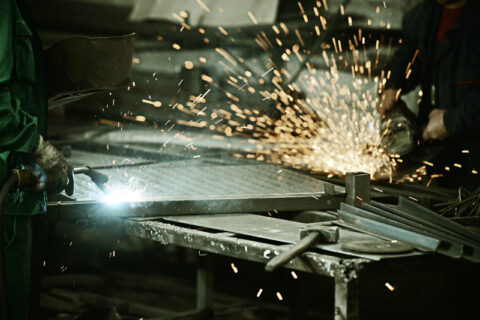Reshoring is an important topic lately and rightfully so. As this article in Industry Week points out, reshoring was hitting record levels in the US in 2021 with Ohio noted as one of three states in addition to Arizona and Tennessee being major beneficiaries. This is expected to continue through 2022 and despite us working through the covid influenced haze of the last two years as well as navigating global strife and rising inflation, manufacturing remains on the rise.
The trend will be further buoyed by the administration’s recent pushing of “made in America” requirements and guidelines for federal spending. This will drive more manufacturing domestically in the coming years.
It is all positive news, but we still have global competition. Off-shoring was driven by cost, to begin with in years past and led to stretched-out supply chains all over the globe and unfortunately, a loss of domestic production. Cost is still ever important for manufacturing businesses, and this won’t be changing. Prices can be adjusted in the near term to compensate for inflation and other factors, but eventually, that will plateau, and it will come back to cost to optimize margins.
US companies will have to be competitive in terms of productivity but another competitive advantage now in recent years is speed via lead time and consistent supply, which has become key post covid.
Here are a few ways we see important to enhancing competitiveness in the changing landscape today.
- Speed and consistency will be key – at least for a while. Global supply chains got wrecked in the last two years and continue to be mangled. Larger organizations that ran on low-cost sources have been forced to rework their supply lines and emphasize more regional sourcing. This is an opportunity as the US and greater North America will be a key hubs. Leveraging lean to compress lead times and ensure consistent output will be key drivers.
- Cost will still be a major factor. So, productivity will be critical. Again here, lean will be critical to ensure optimal flow and labor application to keep costs controlled and pricing attractive. Automation will also be a key complement to lean practices in order to optimize machine versus labor ratios.
- People will be a separator. In fact, I see this as a key differentiator for US manufacturers compared to suppliers in many other global locations, particularly low-cost regions having seen many. A challenge is our manufacturing workforce from the baby boomer generation is nearing retirement, so while Gen X and Gen Y have been filling in, it is not at the same numbers. Gen Z is even less so and with each passing generation, it is becoming more challenging to get the numbers needed in manufacturing. This must change – culture and talent policies need to focus on younger workers with training, meaningful work, and leveraging technology. Talent management and retention will be important to get ahead and stay there.
Opportunities abound with regionalizing of manufacturing. Even if inflation keeps rising and we continue to encounter global calamities, the outlook of “making things” remains strong. If a recession does hit, the above will be even more critical to success. Let’s hope we don’t see one and can hit a good period of stability and growth after seemingly 2 ½ years of stress testing.
If you are looking for a machining partner in the Midwest that adds value, not drama and headaches, contact us today.



